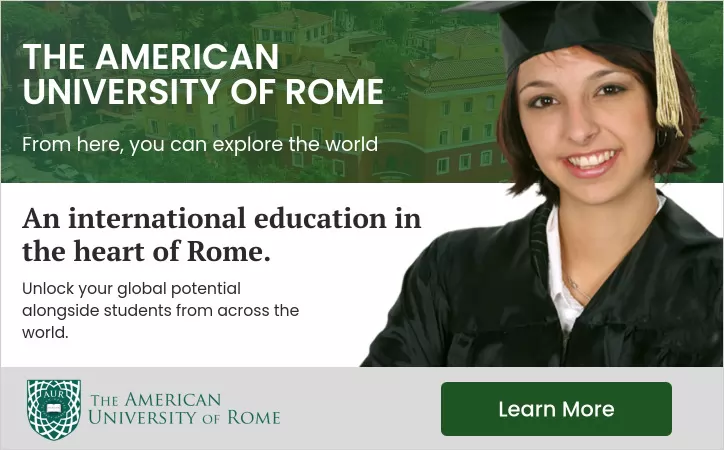Behind the deceptively austere neo-classical frontage of the British School at Rome resides a lively multi-cultural community where ideas are swapped over the communal dining table.
Since this is the year of EXPO Milan, it is intriguing to think that the British School at Rome, which rears solid, lofty and august above the Valle Giulia on the fringe of the Villa Borghese park, was originally conceived as a pavilion for the International EXPO Rome of 1911.At that time, Britannia ruled the waves, and the British government was determined to create a showcase that would reflect the glory of the Empire. Eminent architect Edwin Lutyens (whose works include the Cenotaph Memorial in London and the India Gate at New Delhi) was charged with the task. Taking as his inspiration the upper story of St Paul's Cathedral, London, he designed a grandiose neo-classical façade atop a sweeping flight of stairs worthy of a Palladian palace.
The facade, however, was just that – an imposing frontage to house an exhibition of British art. Along with most of the other buildings created for the World Fair, it was not intended to be permanent and almost all the pavilions were demolished once the show was over. However, Sir Rennell Rodd, the British ambassador at the time, had a better idea.
The precursor of the present institute, the British School of Archaeology, History and Letters of Rome, was housed in somewhat cramped conditions in Palazzo Odescalchi in Piazza SS. Apostoli and needed a new seat. Rodd convinced the Italian government to donate the land where the British pavilion stood so that the school could move to more suitable premises. Only the façade was preserved.
The interior had to be rebuilt to provide resident facilities, a library and a dining room for the Fellows. It was granted its Royal Charter on 22 June 1912 and the first resident student arrived in 1916.
Although the empire is long gone, the school maintains close links with the Commonwealth countries, hosting many scholarship winners from Commonwealth nations, as well as from the UK and Ireland. This leads to a lively mix of talents and differing cultural backgrounds.
The British School at Rome caters for the full range of the arts, humanities and social sciences. Accommodation, however, is limited, with only seven artists' studios and 23 twin and single bedrooms available, with no provision for accompanying family members.
Also read:
The British School at Rome is probably best known for its archaeological achievements. During its 100-year history it has been the leader in many important projects, involving sites in the Campagna Romana, the Tiber Valley, Etruria, Abruzzo, Campania and Molise. In recent years, it has also led the way in promoting the use of cutting-edge technologies, such as georadar and magnetometry, to explore and study archaeological sites.
One of the School's most acclaimed successes is the Herculaneum conservation project – the epitome of a well-run archaeological site and a real pleasure to visit.
The project was launched some 20 years ago in collaboration with the archaeological heritage office of Naples and Pompeii and with financial backing from the Packard Humanities Institute of California.
Recent research has focused on the old sewage system, where fruit stones, pips and animal bones have revealed new insight into the diet of the first-century citizens, and also produced the odd surprise like a gold ring that some Roman lady must have been sorry to lose!
In recent years, British School at Rome has branched into the web, backing initiatives like the Portus Project, a stimulating online archaeology course, free and open to all, centred on Trajan's port near Rome's Fiumicino airport and run by the British University of Southampton. In addition, it is contributing to the new European Eagle Project (launched in 2013), which aims to digitise the vast collection of Greco-Roman inscriptions of the ancient world and make them available online.
Also read:
Meanwhile,British School at Rome award-holders continue to make their impact on the outside world. Former residents could be found exhibiting or curating events at major museums and venues like the Tate Modern, the Hayward Gallery and the Royal Academy in London, as well as the Venice Architecture Biennale.In an average year theBritish School at Rome holds 70 events and three exhibitions which are all open to the public. All details are listed in advance on the website, www.bsr.ac.uk, while to join the events mailing list contact events@bsrome.it.
Margaret Stenhouse
General Info
View on Map
The British School at Rome
Via Antonio Gramsci, 61, 00197 Roma RM, Italy




















